Understanding Part Shade Conditions for Container Gardening
Part shade typically refers to areas that receive 3-6 hours of direct sunlight daily, usually in the morning with afternoon shade. These conditions create a unique microclimate for container gardens that differs from in-ground plantings. In containers, soil temperatures fluctuate more rapidly, and moisture levels can change quickly based on exposure and container material. Your potted perennials will thrive when you match their light requirements to your exact part shade conditions. Remember that the intensity of shade varies throughout the seasons as the sun’s angle changes and deciduous trees leaf out or drop foliage. For optimal container gardening success in part shade areas, choose pots with good drainage, use high-quality potting mix designed for perennials, and position your containers where they’ll receive adequate morning light while being protected from harsh afternoon sun. This balance creates the perfect environment for part shade perennials to develop their best foliage color and flowering potential.
10 Beautiful Flowering Perennials for Part Shade Containers
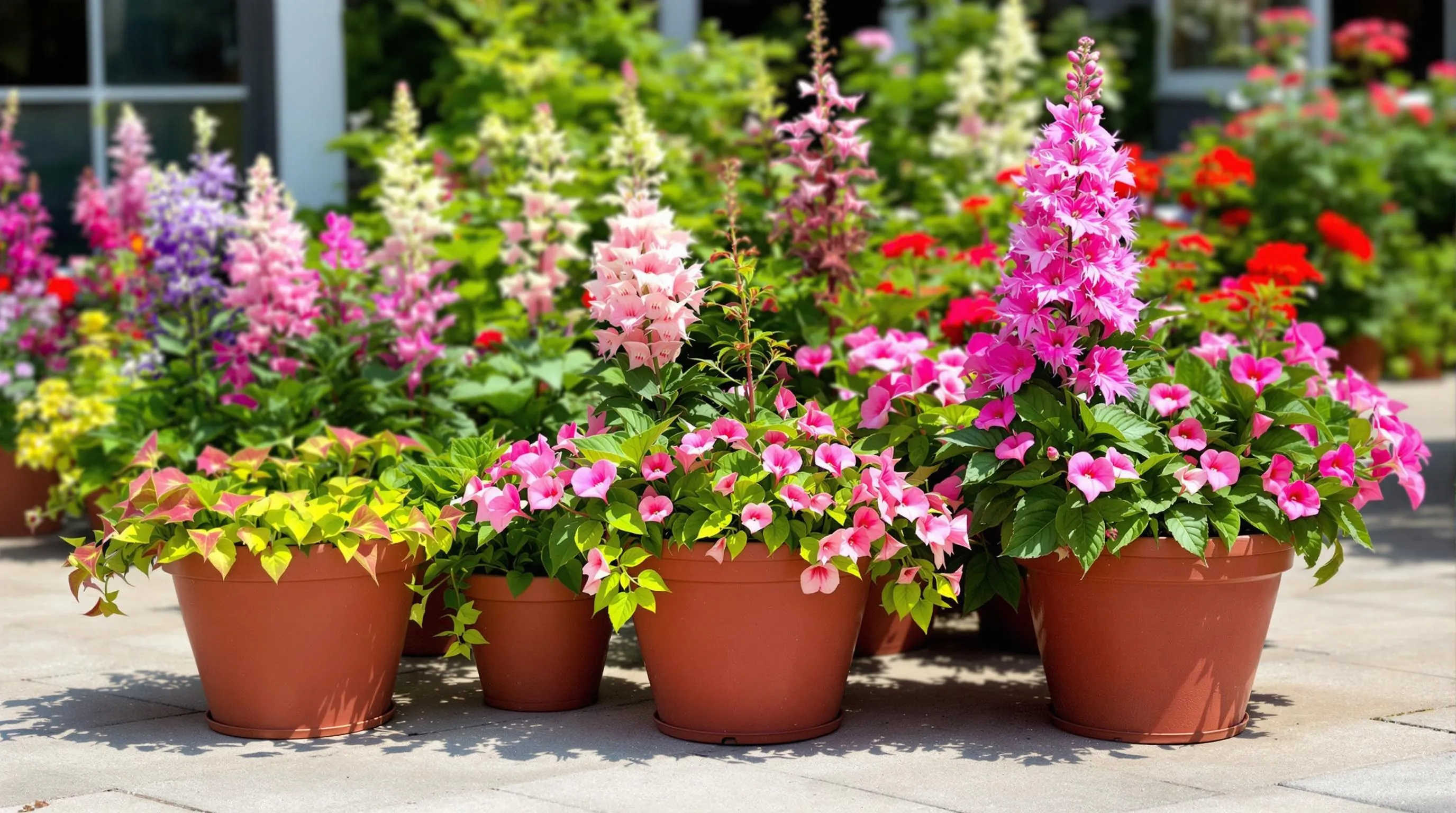
Transform your partially shaded outdoor spaces with these stunning perennials that thrive in containers with limited sun exposure. Each selection offers unique colors, textures, and blooming periods to keep your potted garden looking spectacular throughout the growing season.
Astilbe: Feathery Plumes for Elegant Containers
Astilbes bring dramatic vertical interest to part shade containers with their feathery, plume-like flower spikes in shades of pink, red, lavender, and white. These elegant perennials reach 18-24 inches tall in pots and prefer consistently moist soil. Their fernlike foliage provides attractive texture even when not in bloom, making them ideal focal points in container arrangements. Plant astilbes where they’ll receive morning sun and afternoon shade for the best flowering performance.
Bleeding Heart: Romantic Danglers for Partial Shade
Bleeding Hearts captivate with their distinctively shaped blooms that dangle from arching stems like tiny hearts. The traditional varieties (Dicentra spectabilis) produce pink or white heart-shaped flowers in spring, while newer cultivars like ‘Valentine’ offer vibrant red blooms. Growing 18-30 inches tall in containers, bleeding hearts appreciate rich, well-drained soil that stays slightly moist. After flowering, their attractive blue-green foliage continues providing interest until they naturally go dormant in summer heat.
Coral Bells (Heuchera): Colorful Foliage All Season
Coral Bells transform part shade containers with their stunning foliage in shades of purple, burgundy, caramel, silver, and lime green. These compact perennials grow 8-12 inches tall and produce delicate flower spikes that attract hummingbirds. Modern heuchera varieties like ‘Caramel’ and ‘Palace Purple’ maintain their vibrant colors even in shadier conditions. Their shallow root systems make them perfect for wider, shallower containers where they can spread and create dramatic color contrasts with neighboring plants.
Hosta: Textural Standouts for Shady Pots
Hostas dominate the shade garden scene with their spectacular foliage ranging from miniature 6-inch varieties to massive 3-foot specimens. Their leaves come in countless variations of green, blue, gold, and variegated patterns with different textures from smooth to heavily corrugated. In containers, compact varieties like ‘Blue Mouse Ears’ and ‘Fire Island’ perform exceptionally well. While grown primarily for foliage, hostas also produce lavender or white flower spikes in summer that attract hummingbirds and add vertical interest to container designs.
Japanese Forest Grass (Hakonechloa): Graceful Movement in Pots
Japanese Forest Grass creates a cascading waterfall effect in containers with its arching, bamboo-like foliage that sways with the slightest breeze. The gold-variegated ‘Aureola’ cultivar brightens shady spots, while ‘All Gold’ offers brilliant chartreuse color that glows in dappled light. Growing 12-18 inches tall and wide, this slow-spreading grass requires minimal maintenance and provides exceptional textural contrast alongside broad-leaved perennials. The foliage takes on stunning orange and red tints in fall, extending seasonal interest in your container garden.
Hardy Geraniums: Long-Blooming Container Stars
Hardy Geraniums offer months of colorful blooms in part shade containers from late spring through fall. Unlike their annual cousins, these tough perennials return year after year with minimal care. Varieties like Geranium ‘Rozanne’ produce violet-blue flowers continuously, while ‘Biokovo’ features delicate pink blooms with attractive reddish fall foliage. Their mounding habit (typically 12-18 inches tall) makes them versatile companions for taller container specimens. Most hardy geraniums tolerate occasional drying out, making them forgiving choices for busy container gardeners.
Toad Lily: Exotic Blooms for Late-Season Interest
Toad Lilies surprise with their orchid-like spotted flowers in late summer through fall when many other perennials have finished blooming. These unusual plants grow 18-24 inches tall with arching stems and lance-shaped leaves that create an elegant, woodland feel in containers. Varieties like Tricyrtis ‘Sinonome’ produce lavender-white flowers with purple speckles, while ‘Moonlight’ offers creamy yellow blooms with dark spotting. Plant toad lilies near container edges where their intricate flowers can be easily appreciated up close during autumn’s shorter days.
Hellebores: Early Spring Bloomers for Shaded Containers
Hellebores reward container gardeners with elegant, nodding flowers in late winter through early spring when little else is blooming. These tough evergreen perennials produce cup-shaped blooms in shades of white, pink, purple, yellow, and even black, often with attractive spotting or picotee edges. Growing 12-18 inches tall, hellebores like ‘Ivory Prince’ and the Wedding Party® series perform beautifully in pots with excellent drainage. Their leathery foliage remains attractive year-round, providing structure and interest in winter container arrangements.
Ferns: Classic Foliage Plants for Part Shade Containers
Ferns bring unmatched textural elegance to part shade containers with their intricately cut fronds and graceful forms. Japanese Painted Ferns offer silver-blue foliage with burgundy highlights, while Autumn Ferns display coppery-orange new growth. Most container-friendly ferns reach 12-24 inches tall and prefer consistently moist, rich soil. Combine different fern varieties in a single pot for a sophisticated monochromatic display, or pair them with flowering perennials for textural contrast. Their prehistoric appearance adds a touch of woodland magic to any partially shaded container garden.
Lamium: Low-Growing Accent for Container Edges
Lamium excels as a trailing accent in part shade containers with its silvery, patterned foliage and small but many pink, purple, or white flowers. This low-growing perennial (6-8 inches tall) cascades 12-24 inches over pot edges, softening container arrangements and filling empty spaces between taller specimens. Varieties like ‘White Nancy’ feature bright silver leaves with thin green edges, while ‘Pink Pewter’ combines silver foliage with delicate pink blooms. Lamium’s drought tolerance once established makes it an especially practical choice for upper stories of container plantings that may receive less consistent watering.
Designing Year-Round Interest with Part Shade Perennial Containers
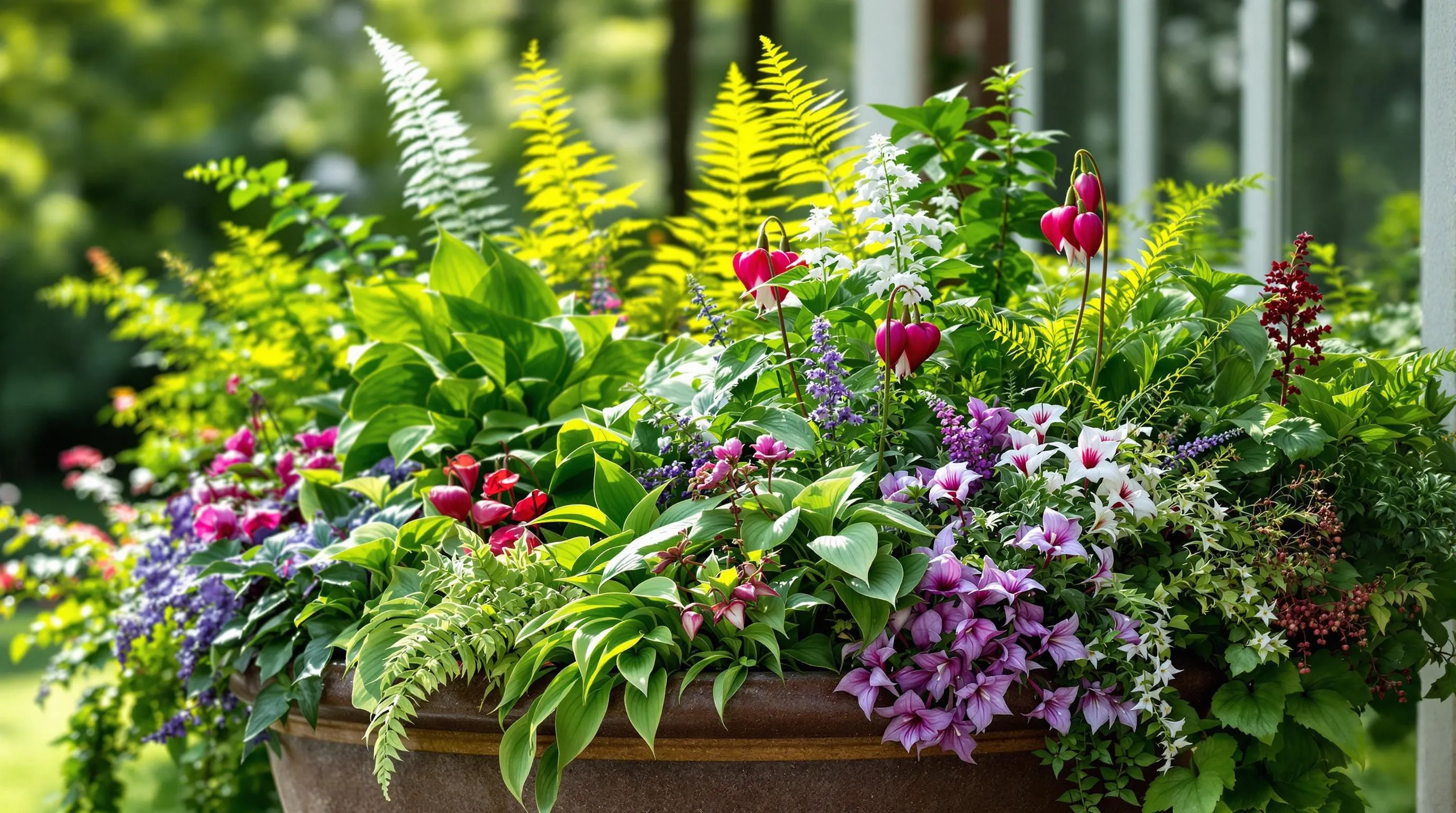
Creating containers that offer visual appeal throughout all seasons requires thoughtful plant selection and arrangement. By combining perennials with different bloom times and attractive foliage, you’ll enjoy a constantly evolving display even in part shade locations.
Combining Plants with Complementary Textures
Texture diversity is key to creating visually compelling container gardens in part shade areas. Pair bold, large-leaved plants like hostas with delicate, fine-textured perennials such as ferns or Japanese forest grass for ever-changing contrast. Layer different foliage shapes by positioning plants with spiky forms (like astilbe) alongside those with rounded leaves (such as coral bells) to create visual rhythm. For maximum impact, arrange plants with glossy leaves next to those with matte or fuzzy textures—this interplay catches light differently throughout the day, adding dimension to your containers even when nothing is blooming.
Creating Seasonal Color Progression
Plan your containers to showcase continuous color throughout the growing season. Start with early spring bloomers like hellebores, which offer flowers when most gardens are still dormant. Transition to mid-spring and early summer with bleeding hearts and hardy geraniums providing vivid colors. For summer interest, incorporate astilbe and toad lilies that thrive in part shade conditions. Extend visual appeal into fall with Japanese forest grass and coral bells, whose foliage often intensifies in color as temperatures drop. Don’t forget winter interest—select perennials with evergreen foliage or interesting seed heads that persist through colder months, ensuring your containers remain attractive year-round even in reduced light conditions.
Soil and Container Requirements for Part Shade Perennials
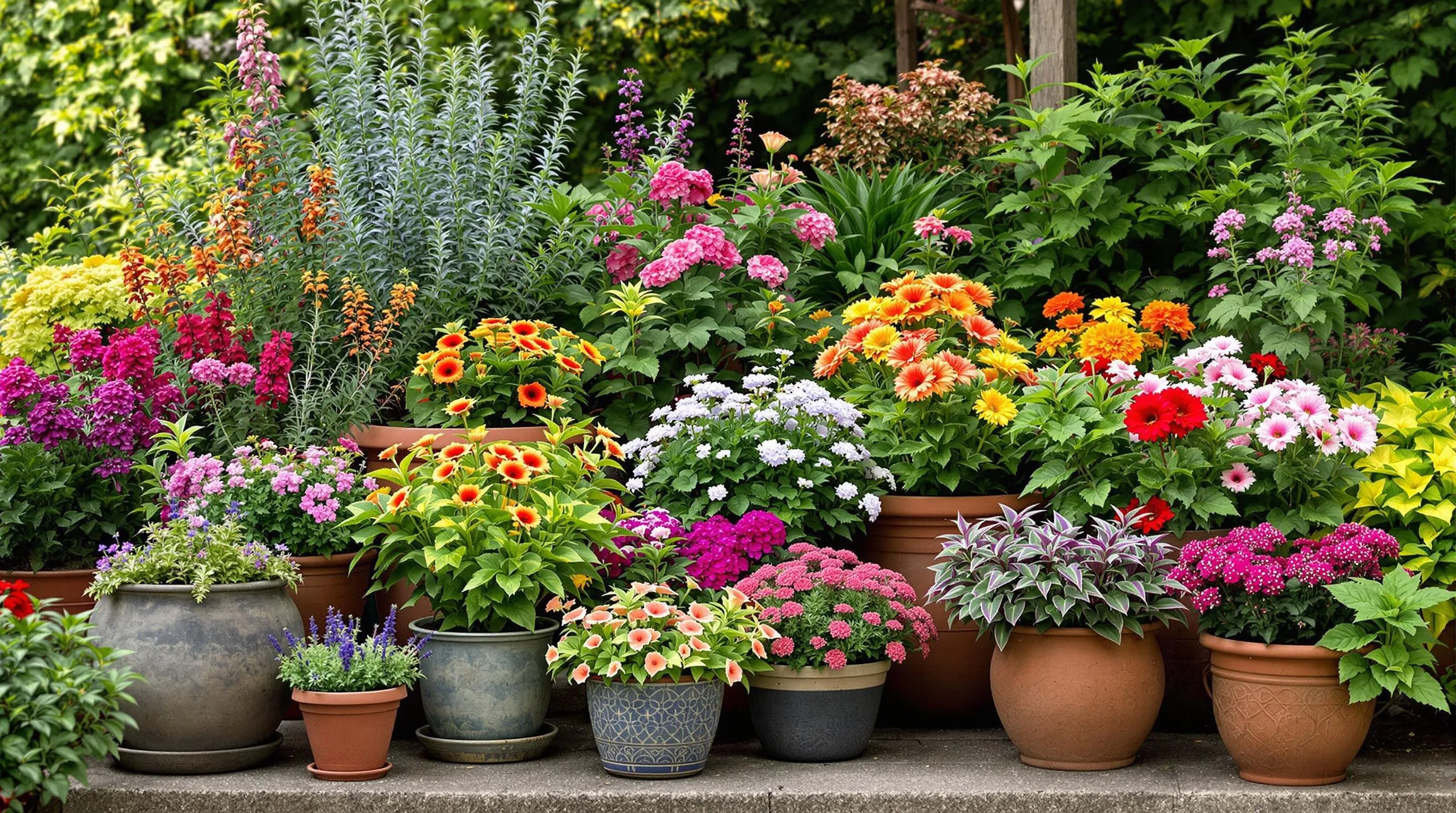
Success with part shade perennials in containers depends significantly on selecting the right pots and soil mix. These elements create the foundation for healthy plant growth and longevity in partially shaded environments.
Choosing the Right Pot Size and Material
Your pot selection dramatically impacts the health of part shade perennials. Choose containers at least 12-16 inches in diameter and equally deep to provide adequate root space for most perennials. Larger plants like hostas may require pots up to 20 inches in diameter. Material matters too—ceramic and terracotta pots offer excellent stability but can dry out quickly, while plastic and fiberglass containers retain moisture longer, perfect for moisture-loving shade perennials like astilbe and ferns. Ensure all containers have sufficient drainage holes to prevent waterlogging. For improved stability in windy locations, select heavier materials like concrete or cast stone, especially for taller perennials like Japanese Forest Grass or larger hostas that might become top-heavy. During winter, choose frost-resistant materials or plan to move containers to protected areas to prevent cracking.
Creating the Optimal Soil Mix for Part Shade Containers
Part shade perennials thrive in well-draining yet moisture-retentive soil mixes. Create an ideal blend by combining 60% high-quality potting mix, 20% compost, and 20% perlite or vermiculite. This combination provides essential nutrients while ensuring proper drainage and aeration. Avoid using garden soil in containers as it compacts easily and may introduce pests or diseases. For acid-loving shade perennials like hellebores, incorporate pine bark fines to lower the pH slightly. Add a slow-release fertilizer during planting to provide steady nutrition throughout the growing season. Most part shade perennials prefer slightly acidic to neutral soil (pH 5.5-7.0), so test your mix and adjust as needed. Replace or refresh approximately one-third of the soil annually to replenish nutrients and maintain good structure. Remember that container soil dries out faster than garden soil, so check moisture levels regularly, especially during hot periods.
Maintenance Tips for Potted Part Shade Perennials
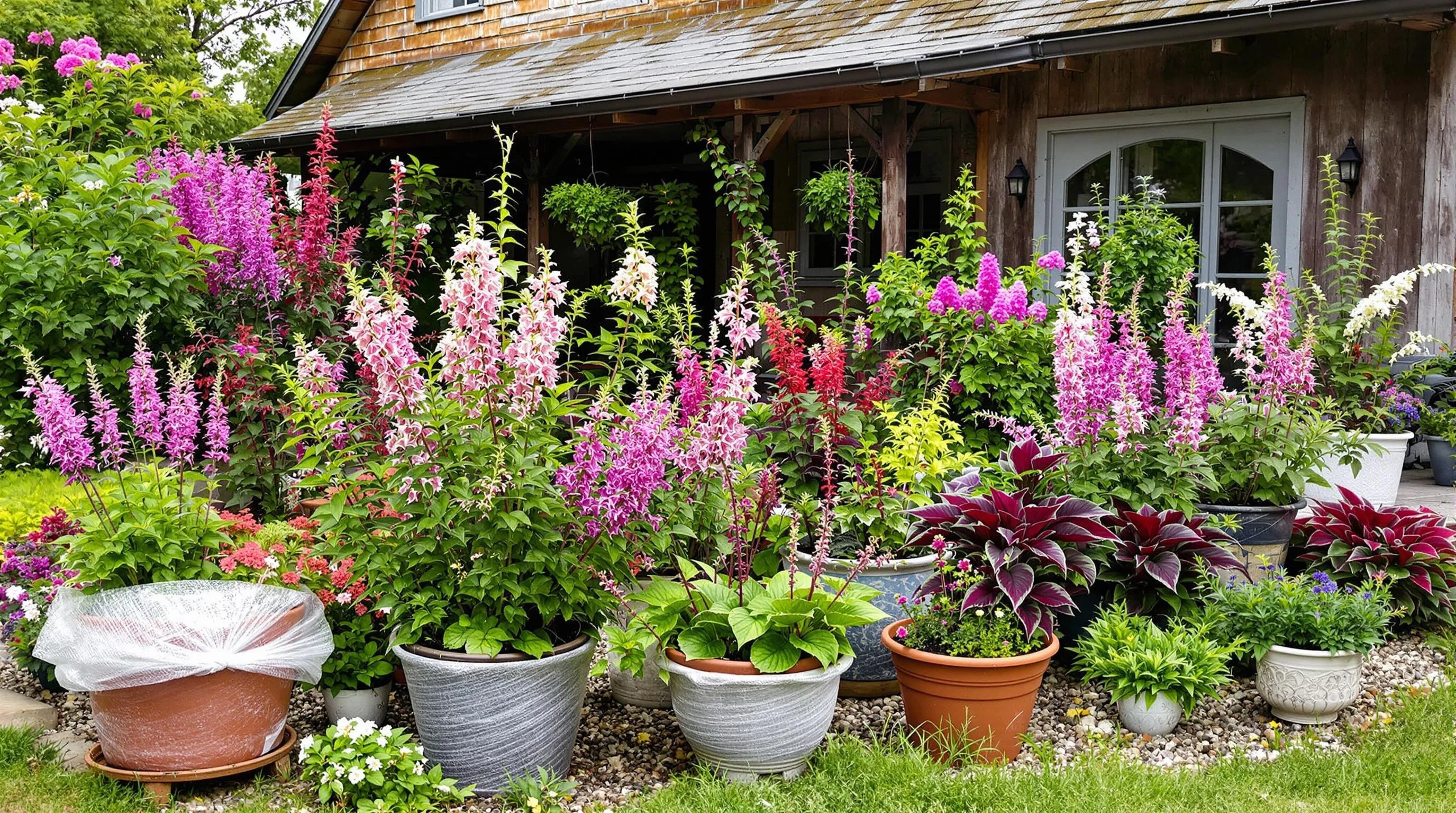
Proper maintenance is essential for keeping your potted part shade perennials healthy and vibrant throughout the seasons. With the right care routine, these container plants can thrive for years with minimal effort.
Watering and Fertilizing Schedules
Watering potted part shade perennials requires more attention than in-ground plants since containers dry out faster. Check moisture levels by inserting your finger 1-2 inches into the soil—water thoroughly when it feels dry at this depth. Most part shade perennials need watering 2-3 times weekly during summer, less in spring and fall. Apply a balanced, slow-release fertilizer (10-10-10) in early spring when new growth appears, then switch to a low-nitrogen formula (5-10-10) in mid-summer to encourage blooming without excessive foliage growth. For acid-loving perennials like astilbe, use specialized fertilizers that maintain proper pH levels. During hot spells, water in the morning to reduce evaporation and prevent fungal issues that can develop with evening watering.
Winter Protection for Container Perennials
Winter poses unique challenges for potted perennials as containers offer less insulation than ground soil. Your potted part shade perennials are typically 2-3 zones more vulnerable to cold damage than their hardiness ratings suggest. Move containers to sheltered locations against buildings or under eaves to protect from harsh winds and temperature fluctuations. Group pots together to create a microclimate that preserves heat. Wrap containers with bubble wrap, burlap, or specialized pot covers to insulate roots—the most cold-sensitive part of perennials. For extreme cold regions, consider burying pots in mulch, leaves, or soil up to their rims in a protected area of your garden. Reduce watering frequency in late fall, but don’t let soil completely dry out during winter thaws. Remove winter protection gradually in spring as temperatures consistently rise above freezing to avoid shocking plants with sudden exposure.
Troubleshooting Common Issues with Potted Shade Perennials
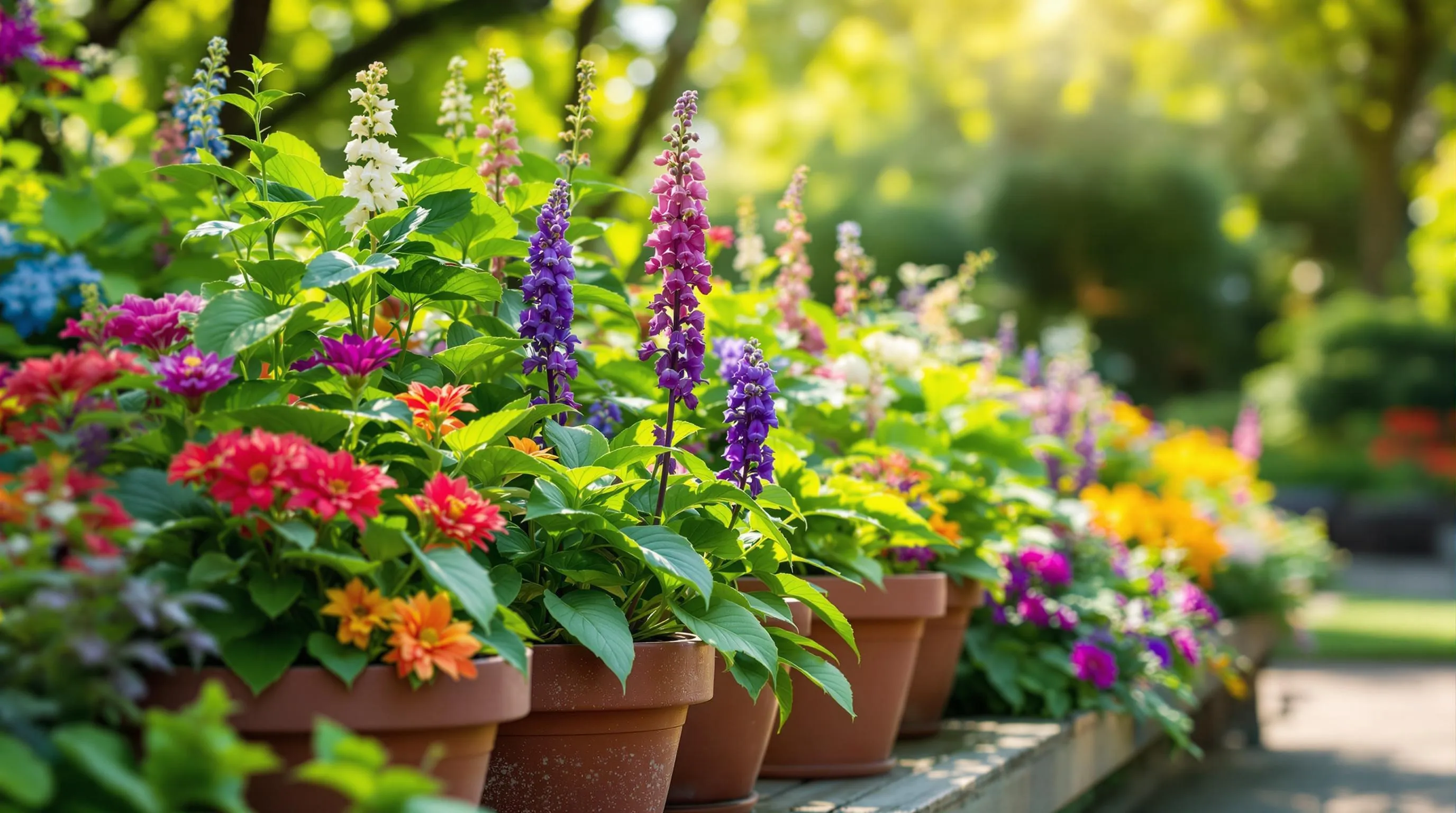
Even the most experienced gardeners encounter challenges with their potted shade perennials. You’ll likely face yellowing leaves, which often indicates either overwatering or nutrient deficiencies that can be corrected by adjusting your watering schedule or adding fertilizer. Leggy growth typically results from insufficient light—reposition your containers to receive more morning sun while maintaining afternoon shade. Root-bound plants show symptoms like stunted growth and roots circling the pot’s edge, requiring repotting into a container 2-3 inches larger in diameter. Pest problems such as aphids, slugs, and spider mites can be managed with insecticidal soap or neem oil applications every 7-10 days until resolved. Fungal issues, appearing as powdery mildew or black spots, develop in humid conditions with poor air circulation—trim overcrowded foliage and avoid overhead watering to prevent these problems. If your perennials fail to bloom, they might need more phosphorus—apply a bloom-boosting fertilizer with a higher middle number in the NPK ratio. For containers that dry out too quickly in summer, add water-retaining polymers to your soil mix or consider self-watering pots to maintain consistent moisture levels for your shade-loving perennials.
Companion Plants for Part Shade Perennial Containers
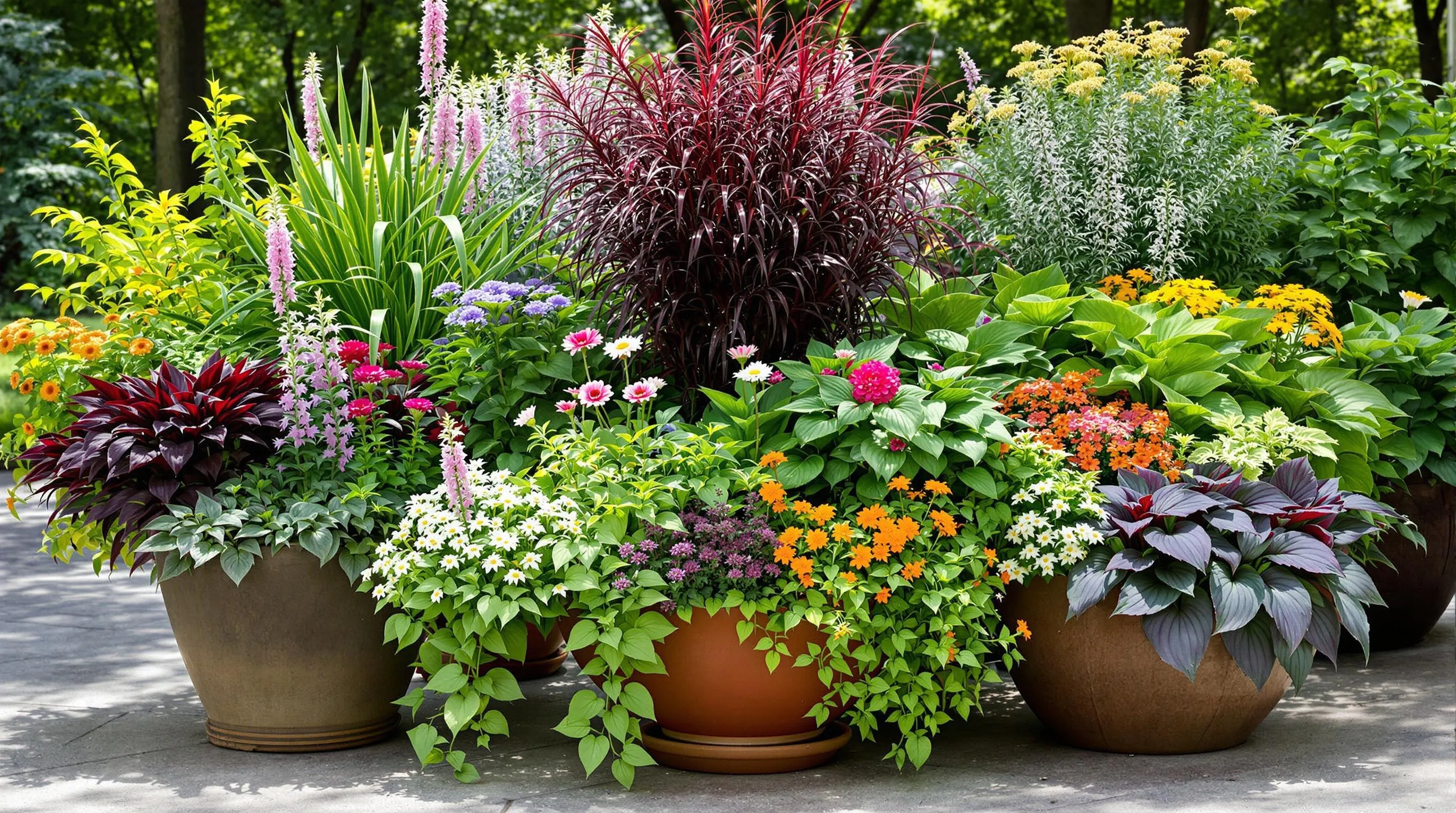
Creating visually appealing container gardens requires thoughtful plant combinations that work harmoniously in part shade conditions. The best companion plants complement your main perennials through contrasting foliage, varied heights, and sequential blooming periods. Consider adding trailing plants like Creeping Jenny or Vinca minor to cascade over pot edges, creating a lush, layered look. Ornamental grasses such as Japanese Forest Grass provide vertical interest and gentle movement with their arching foliage. For texture contrast, pair fine-leaved ferns with broad-leaved hostas or coral bells. Annual accent plants like impatiens, begonias, or coleus can fill seasonal gaps between perennial bloom times, offering continuous color throughout the growing season. When selecting companions, ensure all plants share similar moisture and soil requirements to maintain a healthy container network. This strategic pairing not only enhances the visual impact of your containers but also maximizes the growing potential of your limited pot space.
Conclusion: Creating Your Perfect Part Shade Container Garden
With the right perennials you can transform partially shaded areas into stunning container displays that thrive year after year. By selecting plants suited to 3-6 hours of daily sunlight and matching them with appropriate pots and soil you’ll enjoy beautiful blooms and foliage with minimal fuss.
Remember to consider seasonal interest by combining plants with complementary textures and staggered bloom times. Proper maintenance including regular watering appropriate fertilizing and winter protection will keep your containers looking their best.
Don’t be afraid to experiment with companion planting to create ever-changing arrangements. Your part shade containers can become focal points in your garden space bringing color texture and life to those challenging spots where full sun plants simply won’t thrive.





